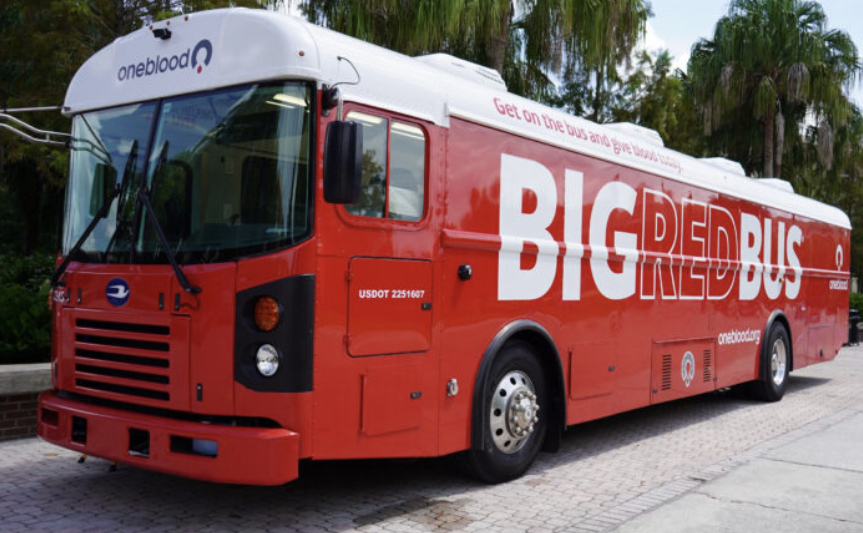Annually, around this time of year, our school arranges a bloodrive. The bloodrive is hosted by The Big Red Bus and Health Academy Students. The Big Red Bus is a mobile blood donation center managed by OneBlood. These portable donation centers can be found around schools, businesses, religious organizations, and community gatherings. These donation centers visit schools because there are numerous students willing to donate blood. This is a great thing, because it really gets students to be involved in the issues in their community and/or their overall environment.
How Does Donating Blood Impacts The Community?
There are multiple reasons why students would choose to join in donating. For example, blood drives at schools are a way for students to participate in a community service project that also saves lives. They also provide leadership opportunities and promote teamwork. Blood drives help patients who are critically ill including cancer patients, premature babies, and accident and burn victims. These patients depend on the generosity of blood drive coordinators and blood donors to help ensure a reliable blood supply. Blood drives also help students experience the value of volunteering, community involvement, and altruism.
What Do They Do?
The organization conducts check ups which include blood pressure, pulse, body temperature, iron count, and cholesterol screening. ID is also required in order to complete the transaction. The drive began on Tuesday, September 19 and went on until near the end of the school day. The organization only removes one pint of blood and on average can save about four lives.
If one is doing a blood donation through their school, there are many aspects that need to be taken into consideration. Firstly, a donor needs to be at least sixteen, and if they are sixteen, they still need their parents’ permission. If a student is 17+ they do not need a permission slip and some sort of ID is required either a driver’s license or even just a school ID card. According to One Blood, there are a lot of precautions one can take. The first one would be to drink plenty of water. Eating certain foods is also very important. A student should probably eat a light healthy meal and avoid foods that contain fat in them.
Carolyn Peguero Nieves, a junior, says “I really liked the process; it was easy and simple.” An anonymous source says: “Even though I almost passed out, the nurses were really nice, making sure I was okay and giving me extra food throughout the day.”
With new scientific and medical research, some of the requirements for donating blood have changed, even from a decade ago. The Seminole Times reported in 2012 that donors had to be a minimum of 102 pounds. Now, that number has been raised to 110 pounds. In 2012, a student could not have gotten a tattoo, body piercing, or a vaccine six months prior to donating. That wait time has now increased to twelve months.
The blood drive is a tradition here at Seminole High School (SHS), and not only does it help the students, but it helps the students feel like they are truly participating in something special. Some students might not be comfortable, and that’s completely okay. Although, if a student wants to do it, they absolutely should to help donate to the community and save others with their healthy blood.





















